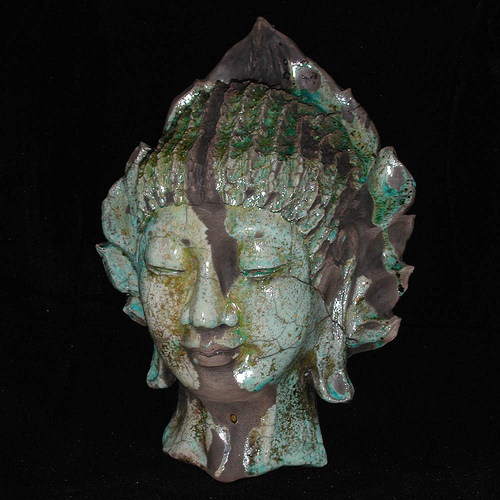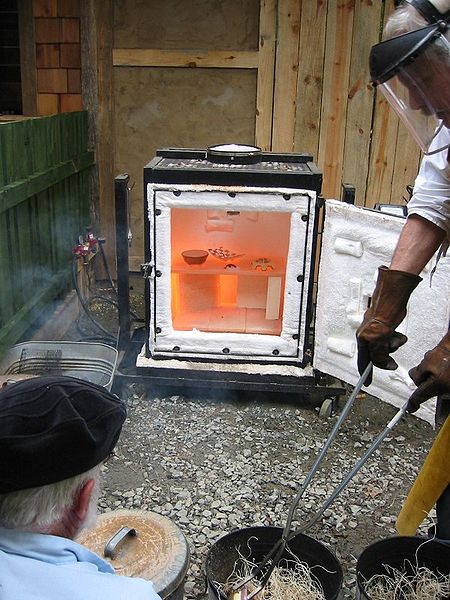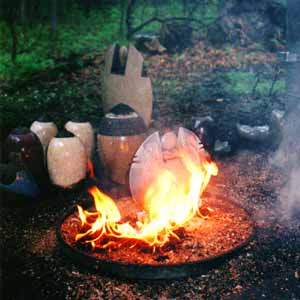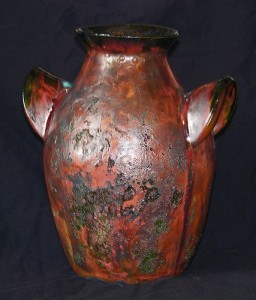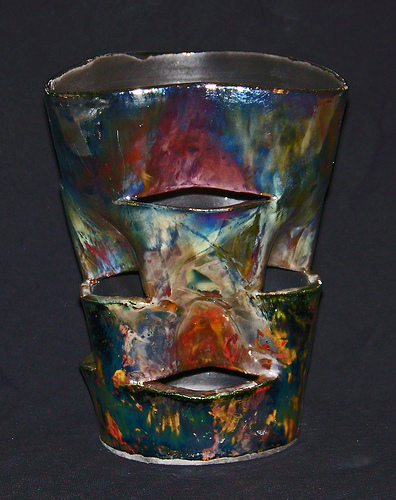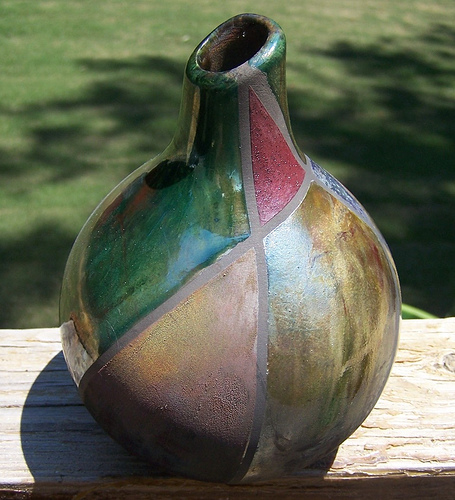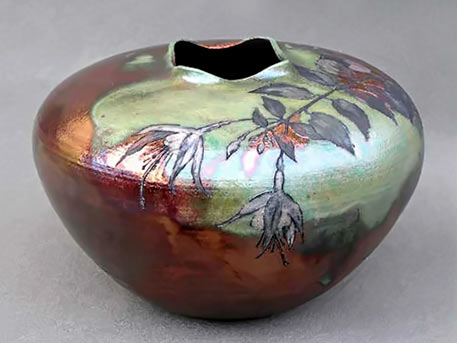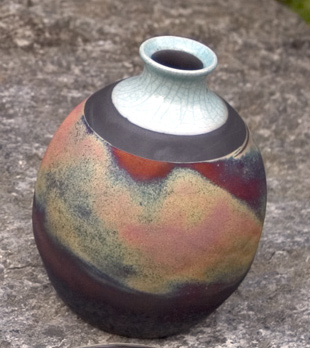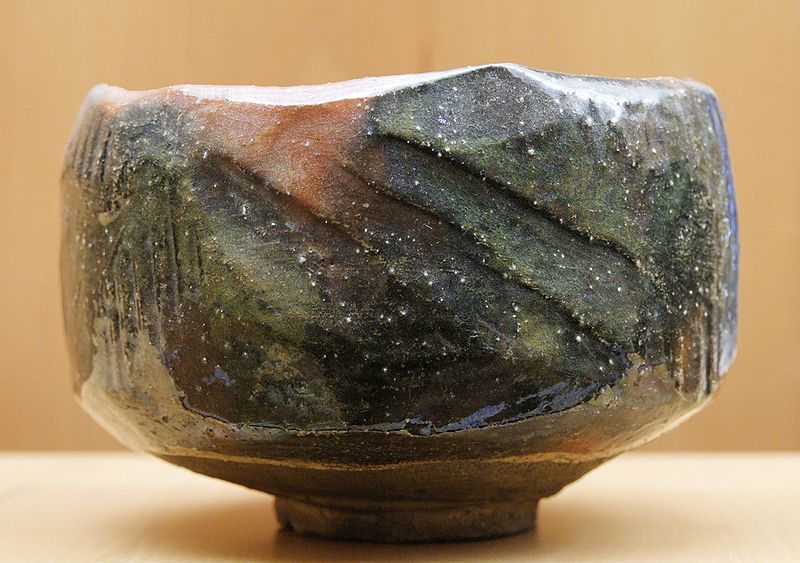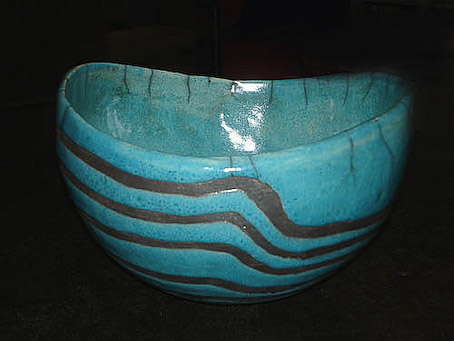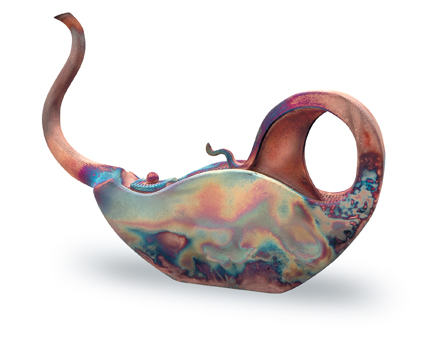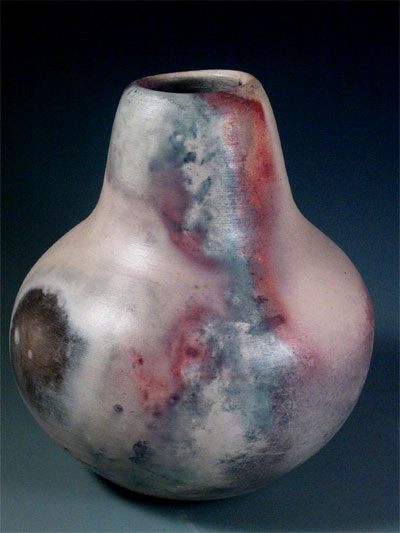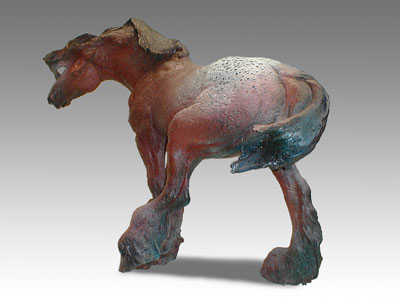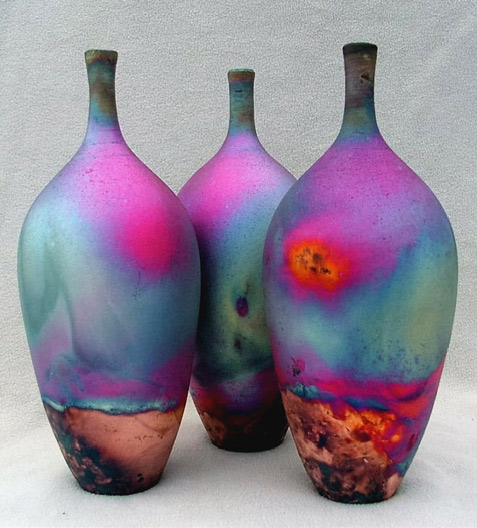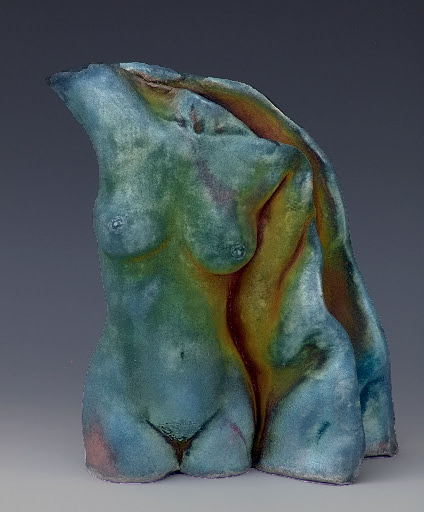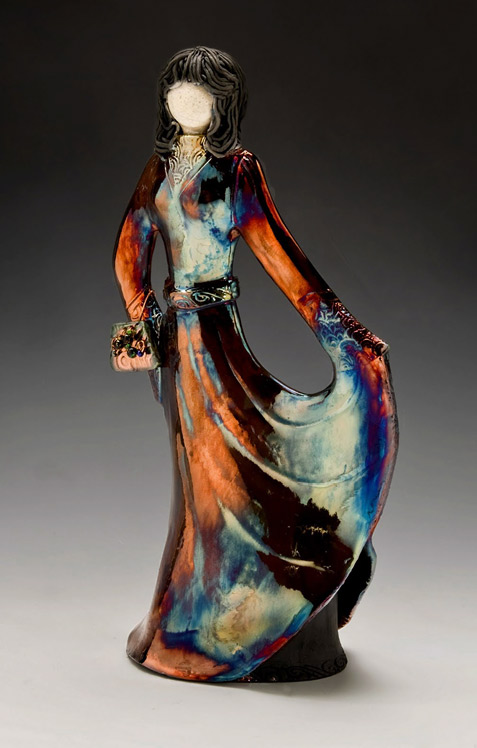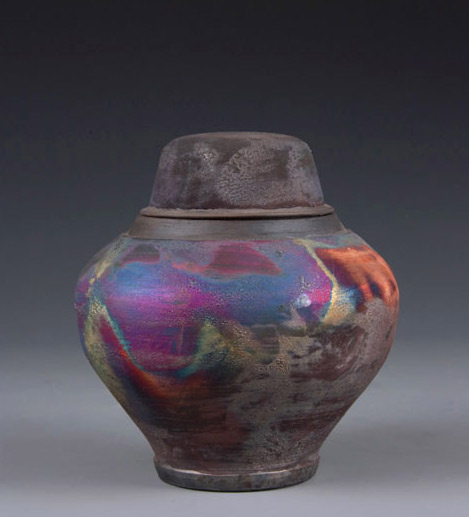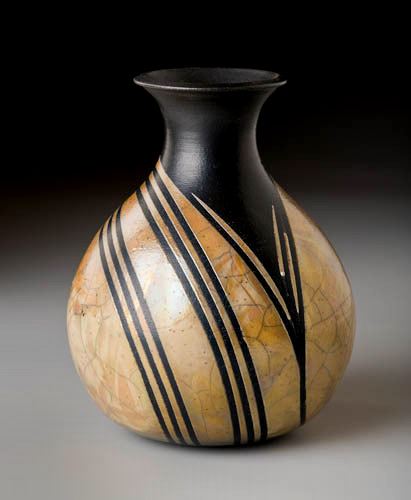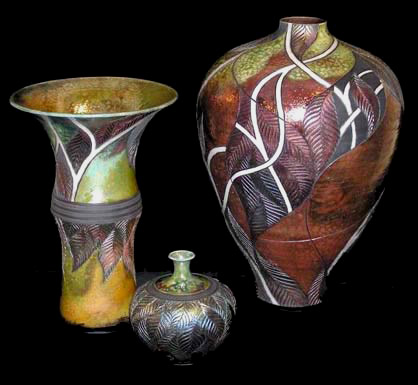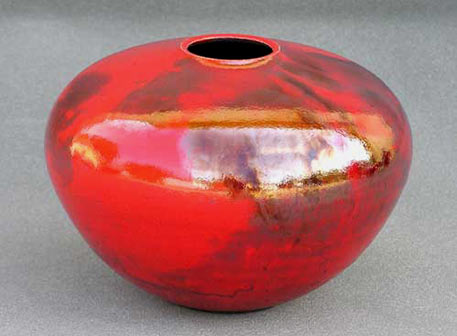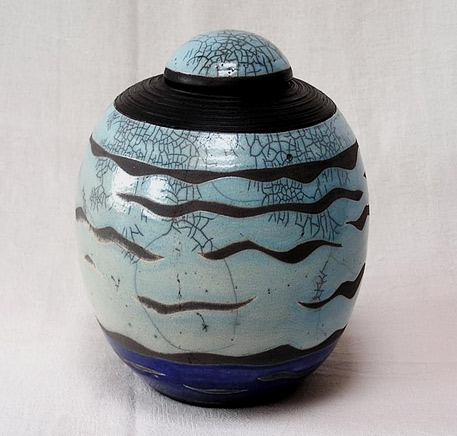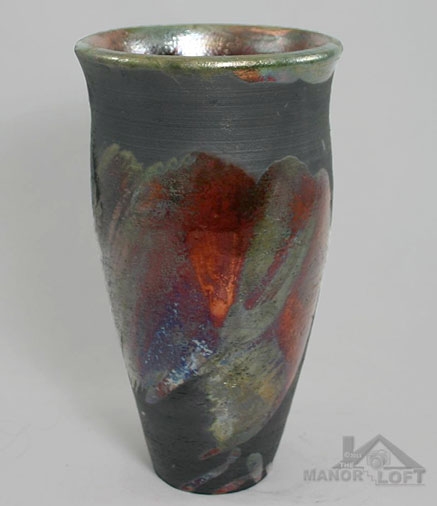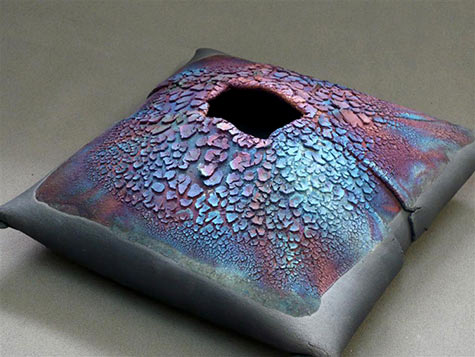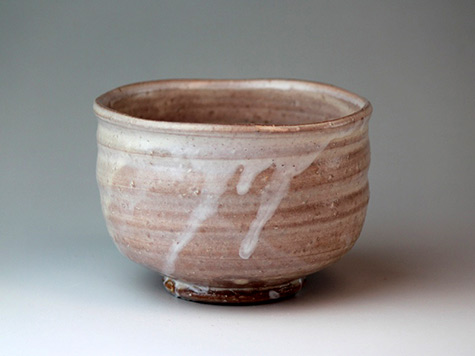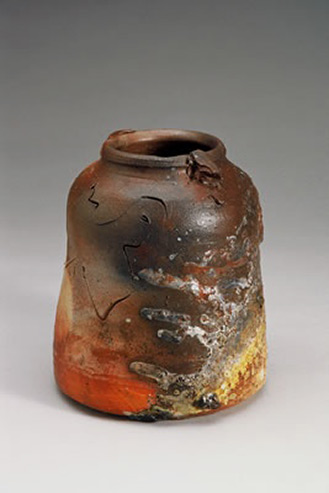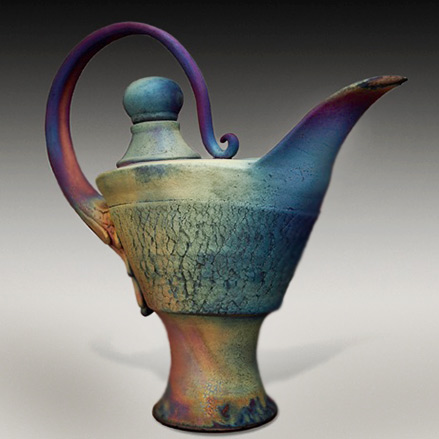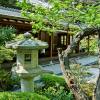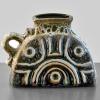–
The word “raku” means “happiness in the accident.” I have also seen an interpretation that says it is derived from the Kanji character meaning “enjoyment” or “ease”. Originally created for the Korean tea ceremony, this technique was subsequently found by ceramic adherents in the sixteenth century in Japan, where the great masters such as Sen no Rikyu were able to give full scope to the art based on a particular process: the fast removal of the piece from the furnace and covering it with flammable materials like natural wood sawdust to inhibit the absorption of oxygen to the molten enamel, which produced the characteristic cracking effect from the thermal shock. Also the colors were rendered with a more metallic appearance . The process of Raku firing differs from other firing methods because the pots are removed from the kiln at their maximum temperature.
The unique look of Japanese Raku pottery is achieved by utilizing both smoke and fire in the Raku kiln to create an unpredictable and unique style. Firstly the pottery is bisque fired , than glazed and fired in a Raku Kiln followed by enhancement in a reduction chamber. As opposed to normal pottery firing where the wares cool down slowly in the kiln and removed with gloves, Raku ware is removed immediatly with tongs. In the traditional Japanese firing process, the pot is removed from the kiln while it is still glowing from the heat and put directly into water or allowed to cool in the open air
Glazing : Raku pottery can be produced from any clay, but if you use the special Raku clay it is more suited to withstand higher temperatures and thermal shock. After placing the completed piece in a kiln and firing it, you apply the Raku glaze by either spaying, brushing or sponging . Some of the Raku glazes produce cracking and result in a spider webbing effect. Also you can combine both a glazed and unglazed natural smokey effect on the pottery
Removal of raku pottery from a kiln at la porte du soleil, Paris
Raku Firing : The first step of bisque firing hardens the clay and needs a level of at least clone 08. Then the glaze is applied and virtually any low temperature glaze is appropriate for Raku. The next step is to fire in a Raku kiln ( F 1800 ) and leave for around 30 minutes before placing in the reduction chamber. A metal can with a lid can be used for this stage, even a metal rubbish bin will work ok and the pottery can remain in this chamber for 15 to 90 minutes. Combustible material such as wood, newspaper, cardboard and dried leaves can be used, they all produce a different effect. The smoke from these materials all contribute to changing the colors and patterns of the Raku pottery. As the fire consumes the oxygen within the can, it also draws the oxygen out of the raku pottery and its glaze. This process is called post fire reduction. It is the post fire reduction stage that creates the unique look of raku pottery. The unpredictability of the process is essentially the result of the removal of oxygen in the reduction chamber.
Raku reduction on a bed of vegetable matter
The final stage is to dunk the piece in cold water and clean with a stiff brush or some abrasive material to remove the ash. Raku pottery is mainly used for decoration rather than being functional.
Raku pottery was first developed by Japanese potters in the 16th century and it still holds a mystique and is embraced by amateur and professional potters till this day. The appeal was heightened in Japan when the ware was created for use in Japanese tea ceremonies.
Raku Pottery Jug in Copper with glass melted over handles – Jaaon Outlaw
Wheel Thrown Raku Pottery by Jason Outaw and Rosalie De Fini Outlaw of Outlaw Pottery
Onion Bulb Shaped Raku Pottery Vase
Red Crow Pottery – Judy – flickr
Hand-carved Fuscia Vessel – Christopher Mathie
A vase glazed and fired using the Western Raku technique, showing the soot, crackle glazing, and random oxidation typical of this pottery form.
A red and black Raku chawan made by (and featuring the mark of) Ryonyu XI, potter of the 9th generation of Ryonyu potters.
Museum of Fine Arts, Lyon, France
la porte du soleil
More Raku see French Raku Studio
Julie Risak’s hand-built teapot.
K.Winograde Vase
An Elizabeth Ritter Raku Sculptured Horse
Hand thrown raku fired fumed copper matt bottles
Chris Hawkins
41 Torso 12 – Anthony Anderson
Raku torso with Copper Sand glaze. ceramic sculpture figure
“The Dancer”
Raku fired figurine, Charlotte Munning
Raku Jar alcohol fumed – Nick LaFone
Odyssey Center -River Arts
Raku Bottle with incisions – Lori Duncan
‘ Good Samaritan ‘ – Christopher Mathie
Christopher Mathie – Rich red raku vessel
My latest inspiration comes from middle eastern architecture. The pieces have minaret like tops on them and some are covered in gold or copper leaf. I also enjoy adding sculptural elements to my work.–
Gina Mars
Marianne Wulffraat-Kerami
Raku Vase – Manor Loft
Raku fired Aligator Pillow – Gise Trauttmansdorff
Hagi yaki ware Japanese tea bowl – Raku chawan – Keizo Takeshita
Janet Mansfield
John Kellum raku teapot
Δ

